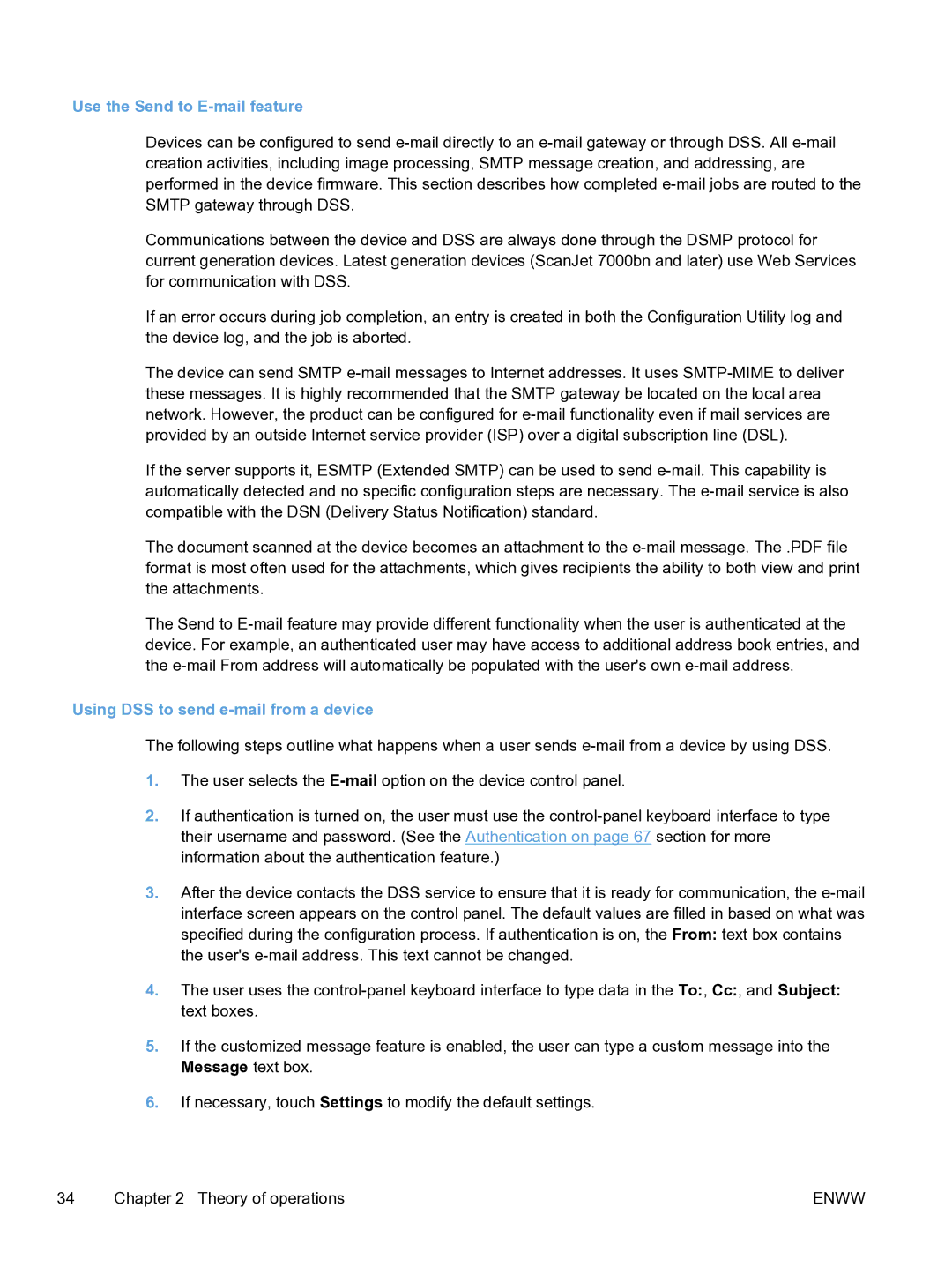Use the Send to E-mail feature
Devices can be configured to send e-mail directly to an e-mail gateway or through DSS. All e-mail creation activities, including image processing, SMTP message creation, and addressing, are performed in the device firmware. This section describes how completed e-mail jobs are routed to the SMTP gateway through DSS.
Communications between the device and DSS are always done through the DSMP protocol for current generation devices. Latest generation devices (ScanJet 7000bn and later) use Web Services for communication with DSS.
If an error occurs during job completion, an entry is created in both the Configuration Utility log and the device log, and the job is aborted.
The device can send SMTP e-mail messages to Internet addresses. It uses SMTP-MIME to deliver these messages. It is highly recommended that the SMTP gateway be located on the local area network. However, the product can be configured for e-mail functionality even if mail services are provided by an outside Internet service provider (ISP) over a digital subscription line (DSL).
If the server supports it, ESMTP (Extended SMTP) can be used to send e-mail. This capability is automatically detected and no specific configuration steps are necessary. The e-mail service is also compatible with the DSN (Delivery Status Notification) standard.
The document scanned at the device becomes an attachment to the e-mail message. The .PDF file format is most often used for the attachments, which gives recipients the ability to both view and print the attachments.
The Send to E-mail feature may provide different functionality when the user is authenticated at the device. For example, an authenticated user may have access to additional address book entries, and the e-mail From address will automatically be populated with the user's own e-mail address.
Using DSS to send e-mail from a device
The following steps outline what happens when a user sends e-mail from a device by using DSS.
1.The user selects the E-mailoption on the device control panel.
2.If authentication is turned on, the user must use the control-panel keyboard interface to type their username and password. (See the Authentication on page 67 section for more information about the authentication feature.)
3.After the device contacts the DSS service to ensure that it is ready for communication, the e-mail interface screen appears on the control panel. The default values are filled in based on what was specified during the configuration process. If authentication is on, the From: text box contains the user's e-mail address. This text cannot be changed.
4.The user uses the control-panel keyboard interface to type data in the To:, Cc:, and Subject: text boxes.
5.If the customized message feature is enabled, the user can type a custom message into the Message text box.
6.If necessary, touch Settings to modify the default settings.
